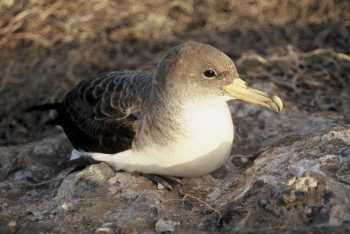Vitor Paiva (IMAR-CMA Marine and Environment Research Centre, Department of Life Sciences, University of Coimbra, Portugal) and colleagues write in the journal Marine Ecology Progress Series on foraging ecology of Cory’s Shearwater Calonectris borealis in the Portuguese Berlengas Islands.
The paper’s abstract follows:
"Annual changes in the behaviour and distribution of top predators at sea may be linked to environmental variability. Here we report, for the first time to our knowledge, the inter-annual (2007-2011) foraging ecology during the pre-laying period of female Cory’s shearwaters Calonectris diomedea from Berlenga (Portugal), based on biotelemetry data. Our aim was to examine the degree of flexibility in the at-sea distribution, behaviour and habitat selection of foraging birds, and relate this with marine environmental stochasticity. Productivity proxies in the closer foraging areas decreased noticeably between 2007 and 2011 (i.e. an increase of sea surface temperature and a decrease of primary productivity). Female Cory’s shearwaters perceived the oceanic changes, and shifted their distribution to an area that could have the food resources required for egg formation. In 2011, in order to exploit the productive Grand Banks and Newfoundland Shelf domains, female Cory’s shearwaters embarked on one of the largest foraging excursions of the pre-laying period when compared to other seabird species (nearly 4000 km). The option to forage on such a distant area in 2011 decreased the females’ body condition and reduced their hatching success, which may be interpreted as an adaptation to local productivity during this energetically highly demanding period to favour their own survival. Long-term monitoring of the foraging behaviour of top predators such as Cory’s shearwaters in years to come may serve as a ‘sensitive’ proxy to help understand the medium- to long-term effects of environmental stochasticity in marine ecological systems.”

Cory's Shearwater, photographed by Paulo Catry
Reference:
Paiva, V.H., Geraldes, P., Ramirez, I., Werner, A.C., Garthe, S., Ramos, J,A. 2013. Overcoming difficult times: the behavioural resilience of a marine predator when facing environmental stochasticity. Marine Ecology Progress Series 486: 277-288.
John Cooper, ACAP Information Officer, 9 September 2013

 English
English  Français
Français  Español
Español